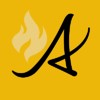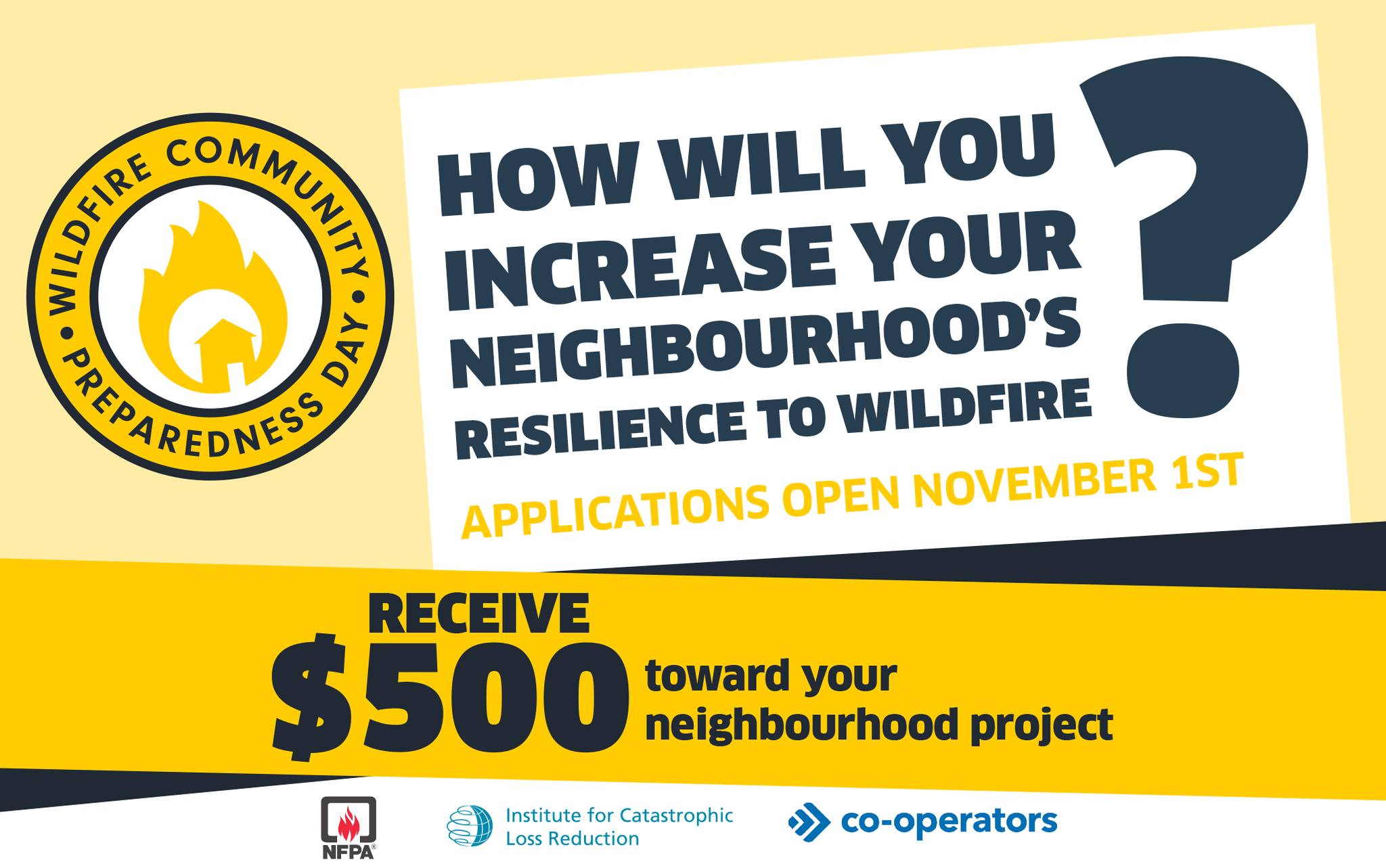
Wildfire season is officially over and fire permits are no longer required. Keep in mind that safe burning practices are always in season. Check your winter burns often and ensure they're fully extinguished.
Never leave your cooking or warming fire unattended and always ensure you fully extinguish it. Soak the ashes, stir them and soak them again until they're cool to the touch.
If you see smoke or flame in the forest and suspect it's a wildfire, call 310-FIRE.
This update is best viewed on a web browser or the AB Wildfire Status App | View previous Edson Forest Area Updates. Bold indicates new or important information.

Dead dry grass and fine vegetation are exposed and available to burn across most of our forest area. These fuels will catch easily and could burn very quickly. If you're planning to burn, we strongly suggest 15 cm of snow to cover the ground (dry grass surrounding a winter burn pile on Nov 14, 2024 north of Edson).
EDSON FOREST AREA WILDFIRE UPDATE
The wildfire danger in the Edson Forest Area remains LOW. This means that a fire can still ignite but is not expected to spread to deeper vegetation layers or larger fuels, such as trees. Fire danger forecast maps will be available again next spring when monitoring of indices resumes.
Since January 1, 2024, there have been 114 wildfires in the Edson Forest Area burning a total of 290.57 hectares (ha).
To date, 30 wildfires were determined to be caused by lightning. Of the 290 ha burnt this year, 195 ha were caused by lightning fires. There were 84 human-caused wildfires, that accounted for 95 ha burnt of the 290 ha.
Of the 84 wildfires that were caused by humans, 12 were from various industries mostly from mechanical failure, spark, friction or hot exhaust. Powerlines caused 14 fires, often due to downed trees on lines, 1 from railroads and 11 were incendiary. Many of the incendiary wildfires were determined to be caused by copper wire burning.
Residents were found to cause 15 of the wildfires, often from unsafe burning or burning without a permit. Recreationalist also caused 15 wildfires, 11 were abandoned campfires and one cooking and warming fire in the fall.
There are 16 wildfires that remain under investigation or are undetermined.
These statistics are consistent with the average number of wildfires and hectares burnt for our forest area and reflect the proactive approaches to wildfire prevention and safe burning practices of residents and industry. Respecting fire bans and restrictions, following fire permit conditions and using care when having a campfire all contributed to reducing human-caused wildfires.
Learn more about wildfire classifications on our website and view active wildfires, their locations and stats on the interactive map on our wildfire status page.
WILDFIRE FIREFIGHTER RECRUITMENT
We're currently accepting applications for seasonal wildfire firefighters. Visit our recruitment webpage to to apply. You can also visit our website to learn more about positions we have to offer.


IF YOU PLAN TO HARVEST IT - GET YOUR PERMIT
Personal Use Forest Products Permits are for small-scale personal use only (no resale) for Christmas trees, firewood or transplants. These free permits are available online or in person at your nearest forestry office. PUFPPs authorize Albertans to cut and removed timber from designated Crown land only. The area-specific PUFPP document must be with you at all times while cutting or transporting trees from Crown land. In one 30-day period, a person can hold up to 4 permits – up to one permit each for: firewood. Christmas trees, roundwood and transplants.
PERMITS ARE NO LONGER REQUIRED UNTIL MARCH 1
While fire permits are not required for burning outside of wildfire season in the Forest Protection Area of Alberta, residents and industry planning a burn during winter should keep safe burning practices top of mind and follow Alberta Wildfire’s guidelines. These include some of the following:
- Carefully select your burn site and do not burn until you have good snow cover in the area.
- Check weather conditions and refrain from burning when an inversion is in place or is forecasted.
- Actively manage burn projects to reduce total burning time.
- Burn debris in stages so that you can adapt to changing weather conditions and reduce smoke.
- Ensure you have the right tools, water and equipment on hand to keep the burn under control.
- Consult your local municipality on how to safely undertake larger winter burning projects near communities or roads.
To assist the Edson Forest Area, please let us know if you plan any large scale winter burning by contacting the dispatch line directly (780) 723-8507 (leave a message if closed) with the following:
- name of landowner burning or company and representative name.
- phone number in case of emergency.
- legal land description or latitude/longitude.
For more information or if you require guidance, you can contact the local forest area or visit our webpage.
Additional information can be found in the Brush piles, windrows and winter burning pamphlet. Or watch our video on how to prevent spring wildfires.
SMOKE MANAGEMENT AND INVERSIONS
Before you burn, check the weather forecast. If an inversion is expected, smoke can be trapped close to the ground overnight reducing visibility and causing dangerous driving conditions and can affects those with smoke related health concerns.
WHAT IS AN INVERSION?
As temperatures start to cool early in the evening, the air closest to the earth’s surface will cool faster than the air above the surface. This is opposite of what air normally does. Normally air cools with the increase of height above the surface. The heat from the surface of the land is radiated back up into the atmosphere, warming the air above this shallow area near the ground, and since cold air is denser than warm air, the areas near the surface become colder than above.
The inversion happens when cold air is trapped near the ground by warmer air. The cool air near the surface cannot escape upwards and this creates a layer in which smoke from winter burning is trapped along the ground surface as it cannot mix out and rise.
HOW TO PREVENT SMOKE FROM LAYING LOW?
Check the weather forecast and plan your burns when inversions aren't likely to occur. If you see smoke (or steam from the local mills) rising directly into the atmosphere, that's the best time to burn to limit smoke issues.
FIRESMART YOUR HOME AND PROPERTY
FireSmart is a national program that helps Canadians increase their resilience to wildfire. Whether you are a homeowner, resident, business, local government, or Indigenous community, you can take small steps with lasting impacts.
It's never too late to participate. Learn how you can FireSmart your home and property! Visit FireSmart Alberta. For farm or acreages, you can download the Farm and Acreage FireSmart magazine.
WILDFIRE COMMUNITY PREPARDNESS DAY
Wildfire Community Preparedness Day gives neighbourhoods and communities the opportunity to receive a $500 award from FireSmart Canada, along with an event kit to help make your event a huge success. Starting a FireSmart conversation in your community can feel overwhelming at first, but Wildfire Prep Day is designed to help you begin your FireSmart journey or continue the incredible work you’re already doing.
Don’t miss out on this opportunity! Apply for your chance to receive $500 to support a FireSmart event or project on your street or within your community. Applications are now open until Jan 31, 2025!
If you have questions, looking for ideas or would like support with your event, contact Caroline Charbonneau (780) 740-1341 or email at caroline.charbonneau@gov.ab.ca
WILDFIRE PREVENTION TIPS, TOOLS & INFORMATION
Albertans are always asked to use caution when working or recreating in the outdoors:
- Before you burn it, get your fire permit. Fire permits in Alberta.
- Clear debris from hot spots on your off-highway vehicle.
- Ensure your campfire is out - soak it, stir it, soak it again.
- Before you head out this weekend, check out the albertafirebans.ca website or download the app to stay informed.
- If you are working within the Forest Protection of Alberta, you must carry sufficient firefighting equipment as per the Forest Prairie and Protection Act.
- For road closure information, please visit 511.alberta.ca
- For information regarding smoke in the area, you can visit firesmoke.ca
- NASA FIRMS Fire Information website is a great resource to give an idea of the location of wildfires in the area, but note that the data is based on interpolation and often can make the wildfire look larger then it actually is.
- Subscribe to the Edson Forest Area wildfire update to receive an email when new information is posted.
- Download the Alberta Wildfire App for Apple and Android device.
- Join the conversation on Facebook, Twitter or Instagram.
For more information, please contact:



.png?width=659&height=345&name=WF_Social-images%20(4).png)